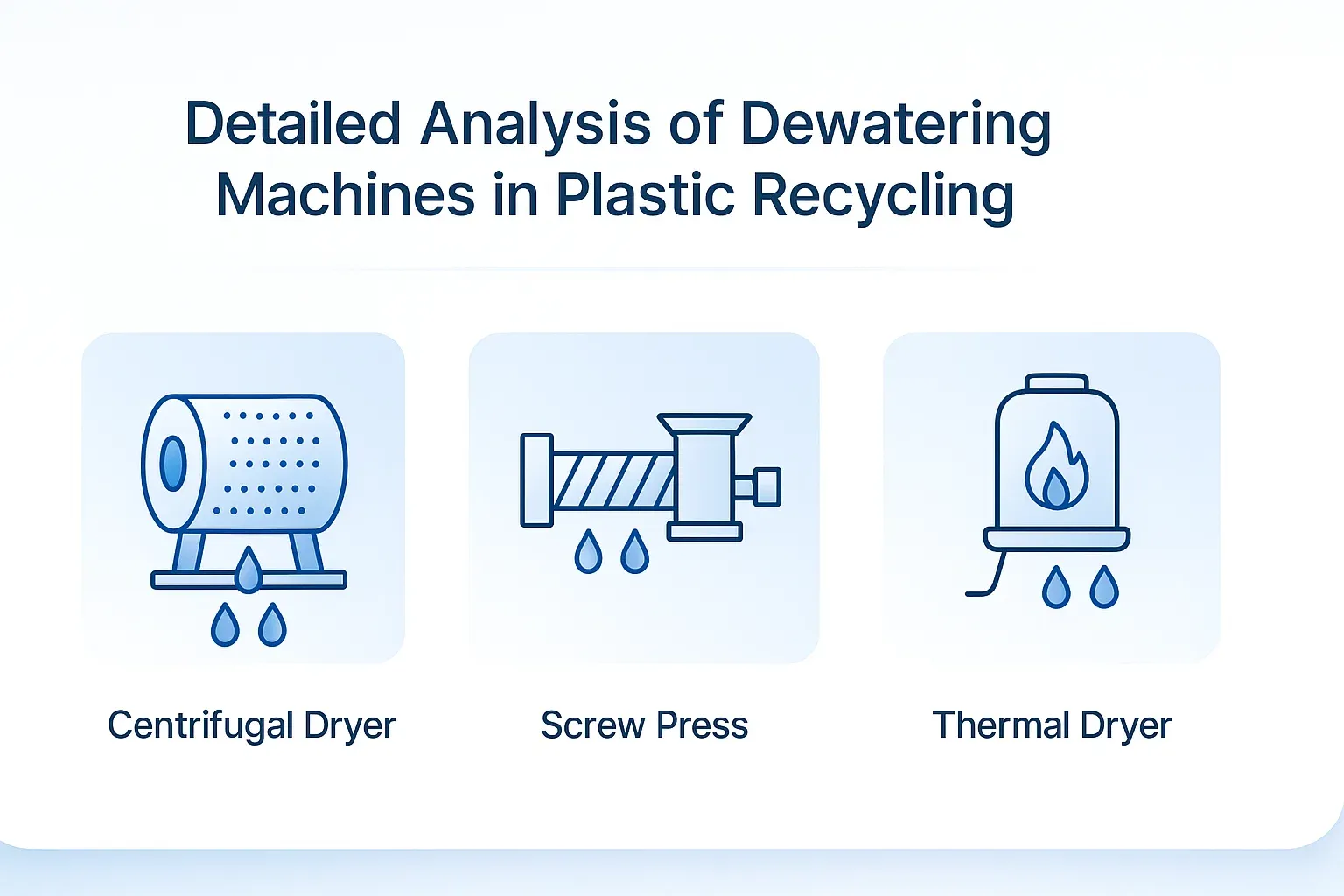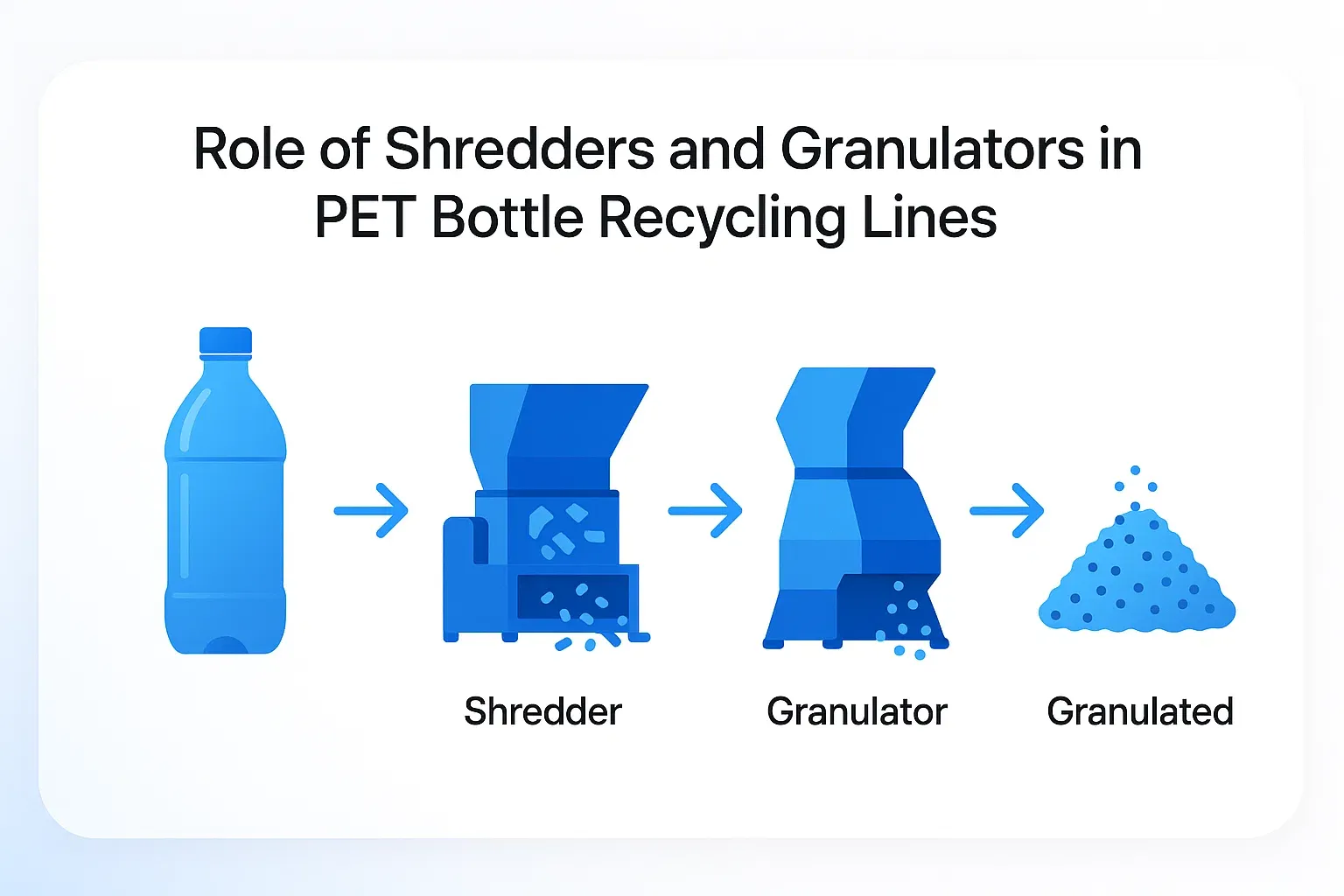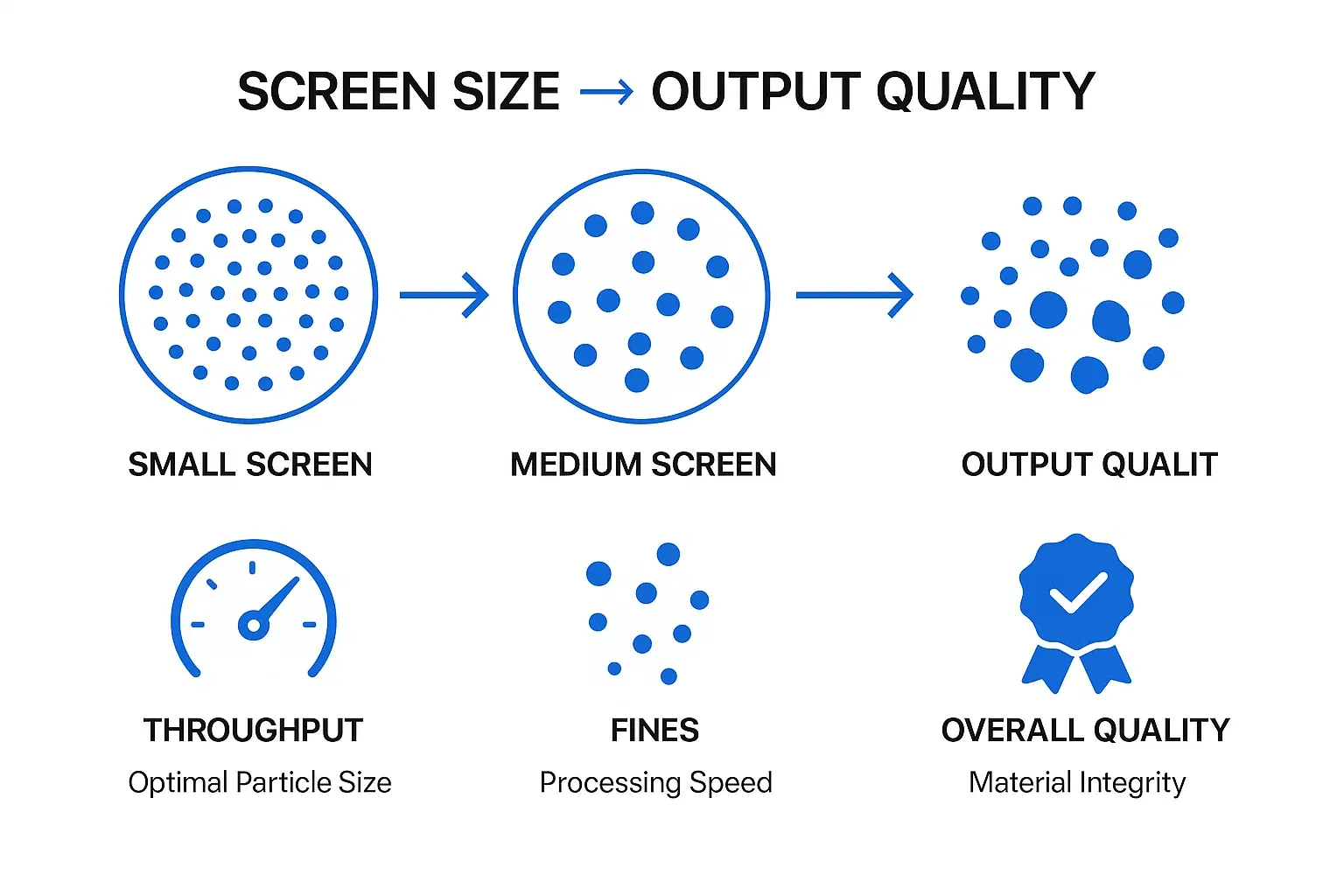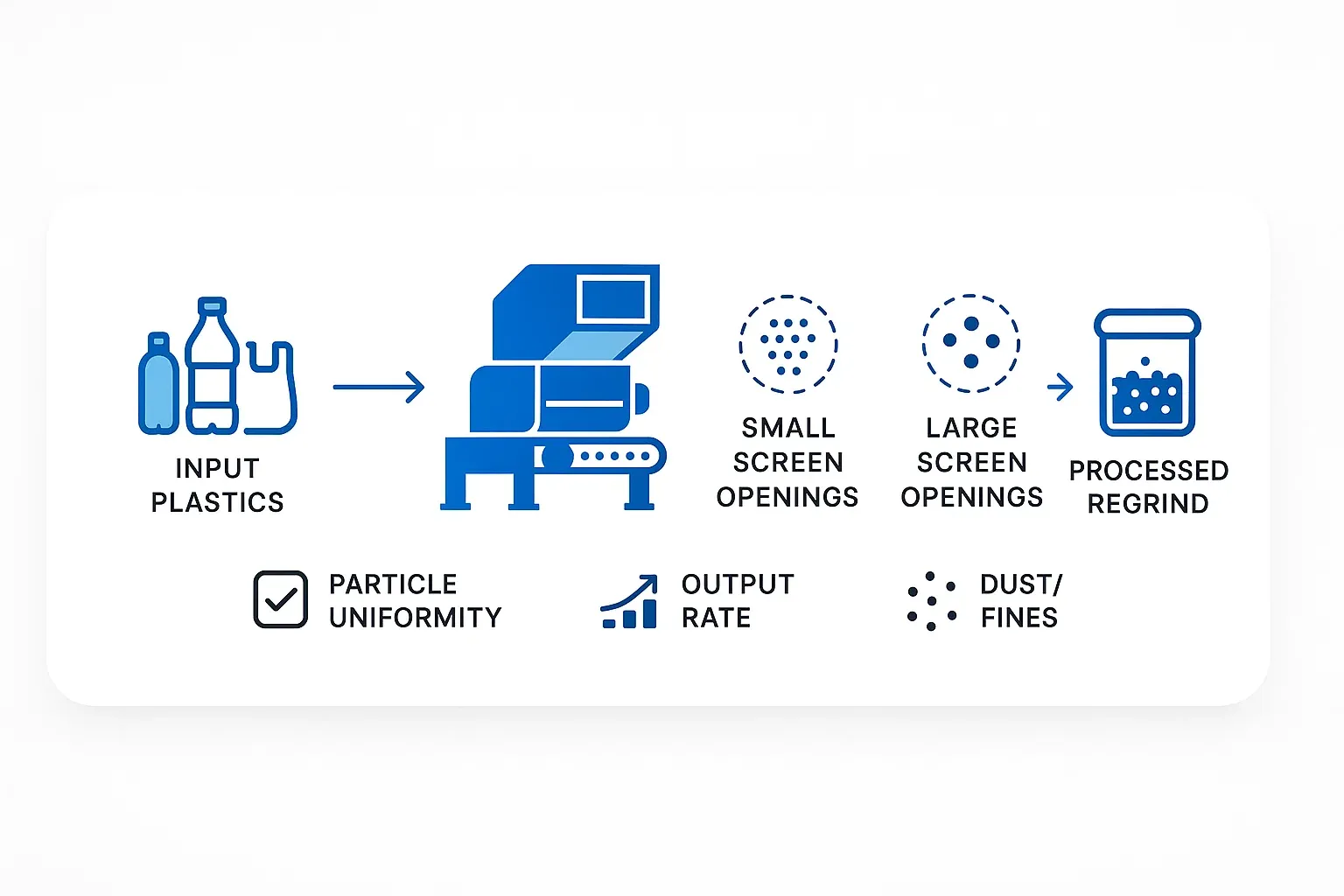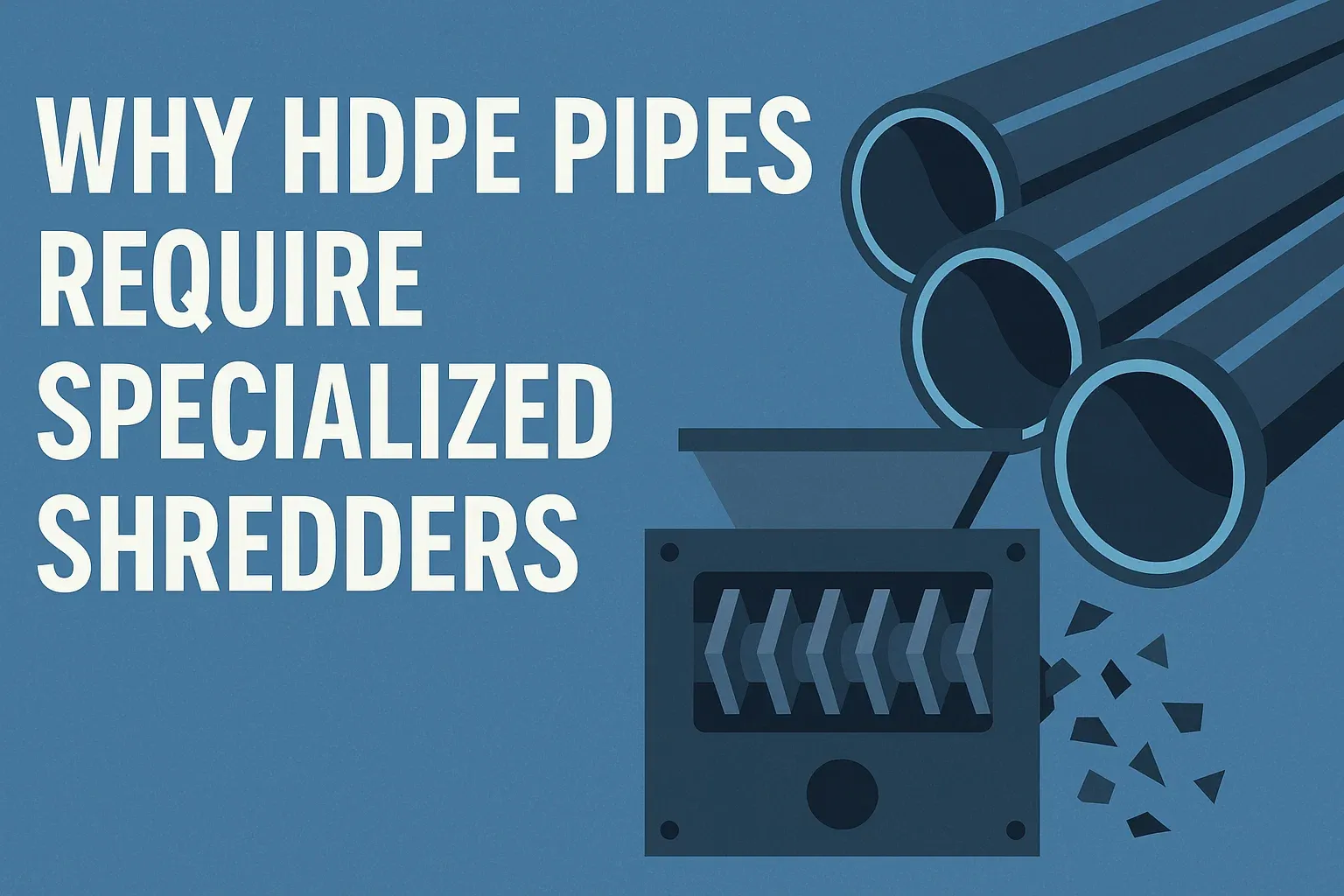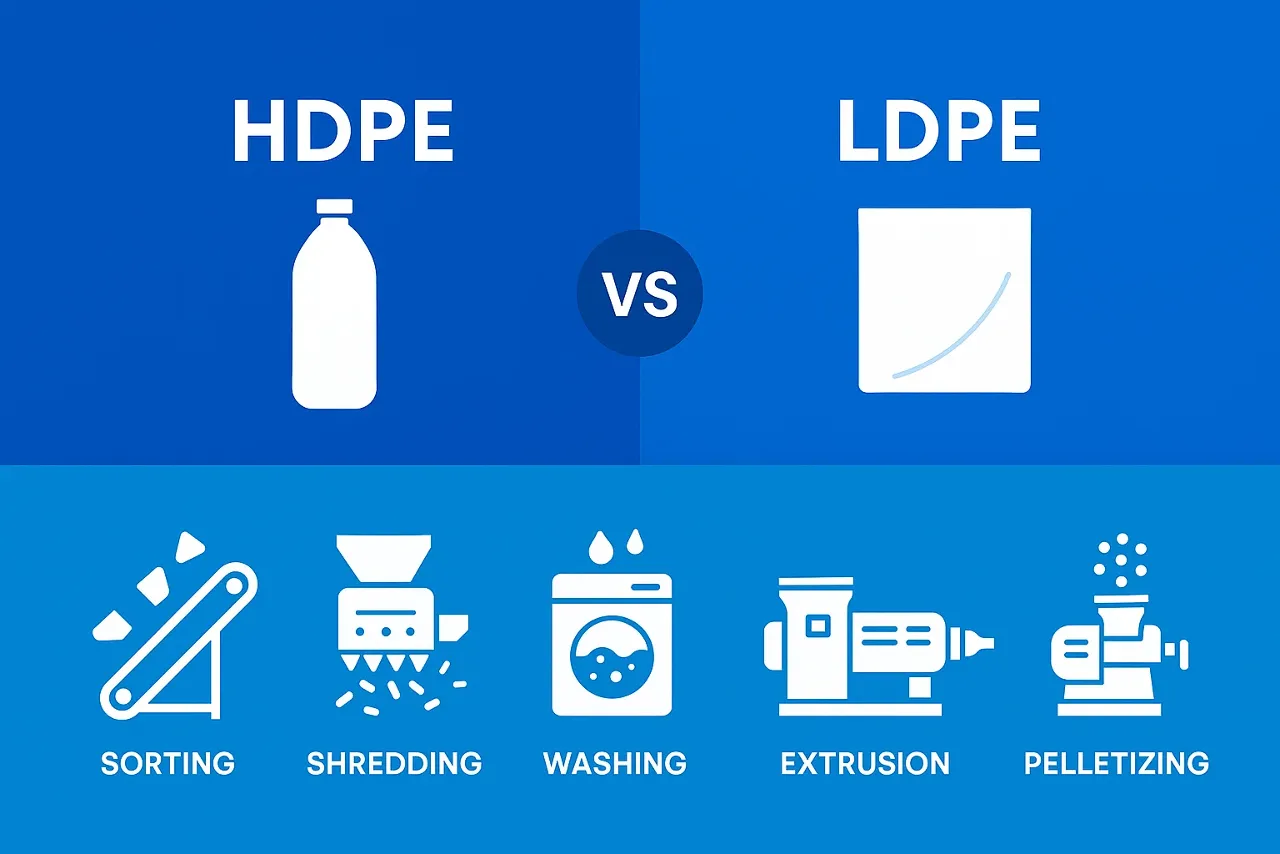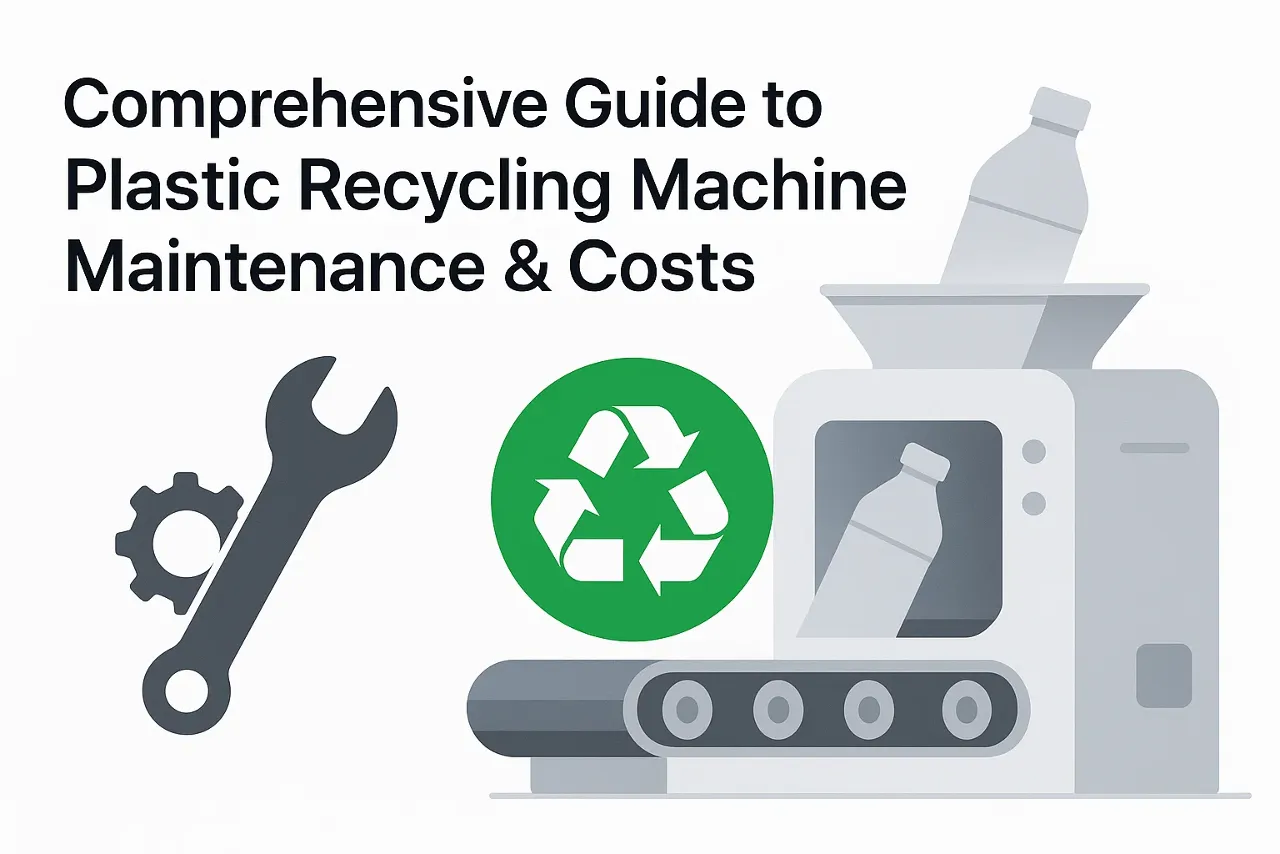Recycling News
Plastic recycling stands as a cornerstone of contemporary sustainability initiatives, with the vital aim of minimising waste and ingeniously repurposing materials into new, valuable products. Within the intricate stages of the recycling process, dewatering emerges as an absolutely crucial step. Its primary function is to efficiently remove water from washed plastics, meticulously preparing them for subsequent, transformative processing.
This article offers an in-depth exploration of the indispensable role, diverse types, and significant advantages of dewatering machines within the plastic recycling landscape. We aim to provide valuable insights for industry professionals seeking to optimise their operations and for environmentally conscious readers keen to understand the mechanics behind effective recycling.
Understanding Dewatering Machines: The Unsung Heroes of Plastic Recycling
Dewatering machines are sophisticated, specialised pieces of equipment meticulously engineered to extract water from various materials. In the specific context of plastic recycling, their principal function is to remove surplus moisture from plastics that have undergone a thorough washing stage. This ensures the plastics are optimally ready for crucial downstream processes such as drying, pelletising, or extrusion. Why is this so important? Excess water can severely compromise the overall efficiency of the recycling line, potentially damage sensitive equipment further down the line, and critically, adversely affect the quality and integrity of the final recycled plastic product.
A typical, well-structured plastic recycling process generally encompasses the following key stages:
1. Collection & Sorting – This initial phase involves gathering plastic waste and then carefully separating it by type (e.g., PET, HDPE, LDPE) and quality, as different plastics require different processing.
2. Washing – The sorted plastics are then thoroughly washed to remove contaminants such as dirt, food residues, labels, adhesives, and other impurities.
3. Dewatering – Post-washing, this is where our focus lies. Dewatering machines work to extract as much water as mechanically possible from the cleaned plastic material.
4. Drying – Even after dewatering, some residual moisture may remain. A subsequent drying stage further reduces this moisture content to meet stringent processing requirements.
5. Pelletising/Extrusion – Finally, the clean, dry plastic is melted and converted into pellets (for later use) or directly extruded into new products, completing the recycling loop.
Industry research consistently highlights the significant variability in moisture content found in washed plastics. For instance, materials like plastic films can retain up to 30% water by weight, whilst other types of rigid plastics might hold as much as 70% moisture before the dewatering step. The primary objective of the dewatering process is to drastically reduce this moisture level to a more manageable range, typically between 5% and 30%, depending on the specific dewatering machine type and the nature of the plastic. This ensures optimal conditions for the subsequent drying and processing phases.
Types of Dewatering Machines and Their Mechanisms
The plastic recycling industry employs several distinct dewatering technologies, each offering unique advantages tailored to specific types of plastic, throughput requirements, and operational needs.
1. Centrifugal Dewatering Machines
Centrifugal dewatering machines, also known as centrifugal dryers, harness the power of high-speed spinning forces to effectively expel water from plastics. As the wet plastic material is fed into a rapidly rotating drum or basket, the centrifugal force pushes the water outwards through a perforated screen, while the dewatered plastic solids are retained. They are particularly effective for processing small plastic flakes, regrinds, and particles, and are commonly found in plastic film recycling plants and operations handling rigid plastic flakes.
• Key Benefits: High operational efficiency, rapid moisture reduction capabilities, relatively compact footprint.
• Moisture Content Post-Dewatering: Typically achieves 5-30% residual moisture, depending on material and machine settings.
• Usage: Highly suitable for various plastic types, including PET, HDPE, LDPE, and PP flakes and films.
Explore Energycle’s range of advanced centrifugal dewatering machines designed for peak performance.
2. Step Dryers
Step dryers represent a more specialised approach, employing a multi-stage mechanical dewatering process. They typically feature a unique step-shaped basket screen and a specially designed rotor that gently tumbles and conveys the material through different zones. This progressive action gradually extracts water. They are particularly effective in recycling engineering thermoplastics like polycarbonate (PC) and polypropylene (PP) where exceptionally low final moisture levels are critical for maintaining material integrity.
• Key Benefits: Capable of achieving ultra-low residual moisture levels (e.g., 0.4% down to an impressive 0.06 wt%), ensuring exceptionally high-quality recycled material.
• Moisture Content Post-Dewatering: Can be as low as 0.06%, significantly reducing the need for thermal drying.
• Usage: Ideal for high-end recycling operations demanding premium-quality output, especially for plastics sensitive to hydrolysis.
3. Squeezing Machines (Screw Presses)
Squeezing machines, often utilising a screw press mechanism, remove water through the application of continuous mechanical pressure. Wet plastic material is fed into a chamber where a rotating screw conveys and compresses it against a perforated screen or a restricted outlet. This pressure effectively squeezes the water out. They are highly robust and ideal for large-scale plastic recycling plants dealing with high volumes. They are particularly efficient for dewatering flexible materials like plastic films and soft plastics, often reducing moisture to as low as 3% in some advanced applications.
• Key Benefits: Generally energy-efficient compared to thermal drying, capable of handling large continuous volumes, effective for difficult-to-dewater materials.
• Moisture Content Post-Dewatering: Typically 2-10%, largely dependent on the specific model, material properties, and operational parameters.
• Usage: Extremely effective for plastic films (LDPE, LLDPE), agricultural films, woven bags, and other soft plastics.
Each type of dewatering machine presents distinct advantages. The optimal choice hinges on a careful evaluation of factors such as the initial and target moisture content, the specific type of plastic being processed, and the overall capacity and economic goals of the recycling plant.
Key Benefits of Dewatering Machines in Plastic Recycling
The integration of efficient dewatering machines into plastic recycling operations brings forth a multitude of significant advantages, optimising the entire process:
1. Reducing Material Weight & Volume
By effectively eliminating the bulk of excess water, dewatering machines significantly reduce both the weight and volume of the processed plastic waste. This reduction has a direct positive impact on logistics, making storage and transportation considerably more manageable and cost-effective.
Example Calculation:
• Consider 1 tonne (1,000 kg) of dry plastic waste that initially holds 70% moisture content. The total weight of this wet material is actually 1000 / (1 - 0.70) = ~3,333 kg (3.33 tonnes).
• After efficient dewatering reduces the moisture content to 20%, the total weight becomes 1000 / (1 - 0.20) = 1,250 kg (1.25 tonnes).
• This represents a substantial ~62.5% reduction in total weight, leading to significantly lower logistics costs (fuel, handling, vehicle capacity) and increased processing efficiency per batch.
2. Preparing Plastics Optimally for Further Processing
For subsequent stages like extrusion and pelletising to be efficient and yield high-quality results, the moisture content of the plastic feedstock must be minimal. Excess water can cause a host of problems, including material defects such as voids, silver streaking, or brittleness in the final product. In severe cases, it can even lead to steam explosions within processing machinery, causing damage to expensive equipment like extruders. Dewatering ensures that the plastic is optimally prepared, minimising these risks.
3. Improving the Quality of Recycled Plastic
Higher-quality recycled plastic is a direct outcome of effective dewatering. By minimising residual moisture, processors can prevent common issues such as post-moulding cracking, warping, or weakened structural integrity in the final products. This enhanced quality is particularly important for industries where precise material specifications and performance standards are non-negotiable, allowing recycled plastics to compete more effectively with virgin materials.
4. Achieving Significant Cost Savings & Increased Overall Efficiency
By substantially reducing the moisture content mechanically, considerably less thermal energy is required for any subsequent (and often energy-intensive) thermal drying stages. This translates directly into lower operational costs (e.g., electricity or gas bills). Additionally, as highlighted earlier, lighter material means lower transport expenses and often allows for higher throughput in downstream equipment.
Illustrative Case Study:
• A plastics recycling plant, after installing an efficient WEIMA C.200 screw press for dewatering their film waste, reported savings of approximately €250 per day purely on transportation and disposal costs due to the reduced weight and volume of the material.
• The initial investment in the dewatering equipment paid for itself within approximately one year, clearly demonstrating the compelling economic benefits of implementing effective dewatering technology.
Challenges & Important Considerations
Whilst highly effective, it's important to acknowledge that most mechanical dewatering machines may not completely eliminate all moisture from the plastic. Depending on the plastic type, its form (flake, film, etc.), and the specific dewatering technology employed, some level of residual moisture will remain. This often necessitates a further thermal drying stage to achieve the ultra-low moisture levels required for certain high-specification applications. Moisture levels after dewatering can vary significantly:
• Centrifugal dewatering machines: Typically leave 5-30% residual moisture.
• Step dryers: Can achieve exceptionally low levels, sometimes as low as 0.06% moisture.
• Squeezing machines (Screw Presses): Generally result in 2-10% moisture, varying with design sophistication and the material being processed.
Therefore, selecting the right dewatering machine, or combination of dewatering and drying technologies, is absolutely crucial to maximising overall processing efficiency, achieving substantial cost savings, and ensuring the desired output quality of the recycled plastic.
Conclusion: The Indispensable Role of Dewatering
Dewatering machines are truly indispensable components in the modern plastic recycling infrastructure. They significantly enhance operational efficiency, the quality of the end-product, and the overall sustainability of the recycling process. By effectively removing water at a critical stage, they help to reduce operational costs, improve the market value of recycled plastics, and actively support a greener, more circular economy.
For any organisation looking to optimise their plastic recycling process, investing in the right dewatering machine is a strategic decision that can yield substantial returns, both in terms of increased profitability and positive environmental impact.
Comparison Table: Dewatering Machine Types at a Glance
| Machine Type | Primary Mechanism | Key Benefit(s) | Typical Moisture Post-Dewatering | Common Usage / Best For |
|---|---|---|---|---|
| Centrifugal Dewatering | High-speed spinning (centrifugal force) expels water | Efficient for small particles/flakes, rapid action | 5-30% | Various plastics (PET, HDPE, PP flakes), film recycling |
| Step Dryers | Multi-stage mechanical water removal, gentle tumbling | Achieves ultra-low moisture levels, preserves material integrity | 0.4-0.06% | High-end thermoplastics (PC, PP), demanding applications |
| Squeezing Machine (Screw Press) | Mechanical pressure and compression extraction | Handles large volumes, energy-efficient, robust | 2-10% (can be lower for films) | Plastic films, soft plastics, high-throughput operations |
By carefully selecting the most appropriate dewatering machine for their specific needs, recycling facilities can significantly optimise their operations, reduce energy consumption, cut operational costs, and make a more substantial contribution to a sustainable future.
Unlock Efficiency: Your Ultimate Guide to Choosing the Correct Plastic Granulator Screen Size
For industrial equipment purchasers, engineers, and technical personnel in plastics processing and recycling, the granulator is a stalwart. But its efficiency and the quality of its output—the regrind—hinge critically on one often-overlooked component: the screen. Choosing the correct granulator screen size isn't just a minor detail; it's a decision that impacts throughput, particle consistency, energy consumption, and even the lifespan of your equipment.
This guide will walk you through everything you need to know to make an informed decision, ensuring you select the optimal screen size for your specific application. Let's dive in!
What is a Granulator Screen and Why is it So Crucial?
At its core, a plastic granulator reduces the size of plastic scrap, runners, purgings, or rejected parts into smaller, uniform particles called "regrind." The granulator screen, typically a perforated metal sheet or plate, is positioned beneath the cutting chamber. As the rotor knives cut the plastic, the material is forced through the screen's holes.
The screen's primary functions are:
- To control the maximum particle size of the regrind. Material stays in the cutting chamber until it's small enough to pass through the screen openings.
- To contribute to the uniformity of the regrind.
Why is this crucial?
- Regrind Quality: The size and consistency of your regrind directly affect its reusability in subsequent processes (e.g., injection moulding, extrusion). Inconsistent or oversized particles can cause processing issues, whilst excessive fines can lead to material handling problems and melt inconsistencies.
- Throughput & Efficiency: The screen size influences how quickly material exits the cutting chamber. An incorrectly sized screen can create bottlenecks, reduce throughput, and increase energy consumption.
- Equipment Wear: A poorly matched screen can lead to increased wear on knives, the screen itself, and place undue stress on the granulator's motor and drive components.
Key Factors Influencing Your Granulator Screen Size Selection
Choosing the right screen size is a balancing act. Here are the primary factors to consider:
Desired Final Particle Size (Regrind Specification):This is often the starting point. What size regrind does your downstream process require? If you're reintroducing regrind into virgin material for moulding, it typically needs to be similar in size and shape to the virgin pellets for consistent melt and flow.
General Rule: The screen hole diameter is generally slightly larger than the desired maximum particle size. For example, a 10mm screen hole might produce particles mostly in the 8-10mm range.
Type of Plastic Material Being Processed:- Hard, Brittle Plastics (e.g., PS, SAN, Acrylic): These materials fracture easily. You might be able to use a screen size closer to your target particle size. However, they can also be abrasive.
- Soft, Flexible Plastics (e.g., LDPE, PP film, TPEs): These materials can be challenging. They tend to stretch and deform rather than shatter. Smaller screen holes might be needed to ensure effective cutting, but this can reduce throughput and increase heat buildup. Specialised "film granulators" often have specific screen designs.
- Tough, Impact-Resistant Plastics (e.g., PC, ABS, Nylon): These require more energy to granulate. Screen selection needs to balance particle size with the granulator's ability to process the material efficiently without excessive heat or fines.
Size and Shape of Input Material:- Bulky Parts (e.g., Purgings, Large Moulded Parts): Larger, more open screens might be initially considered to allow material to be "bitten" by the knives, but the final particle size is still key. Pre-shredding might be necessary for very large parts.
- Runners and Sprues: These are generally easier to process.
- Film and Sheet: Can wrap around the rotor if not managed properly. Screen size and knife configuration are critical.
- Required Throughput (kg/hr or lbs/hr):
Generally, larger screen holes allow for higher throughput as material exits the cutting chamber more quickly.
Smaller screen holes mean material stays in the chamber longer, reducing throughput and potentially increasing fines and heat. You need to balance desired particle size with your production demands.
Granulator Rotor Design and Knife Configuration:- Open Rotor: Better for heat-sensitive materials and bulky parts, allowing more air flow.
- Closed (Solid) Rotor: Provides more cutting power for tougher materials.
- Number of Rotor & Bed Knives: More knives generally mean more cuts per revolution, which can allow for slightly larger screen holes whilst still achieving a smaller particle size.
- Knife Gap: A properly set knife gap is crucial for efficient cutting and works in tandem with the screen.
Acceptable Level of Fines:"Fines" are very small particles or dust. Excessive fines can cause problems in downstream processes.
Smaller screen holes, especially with soft or heat-sensitive materials, can sometimes lead to increased fines due to over-grinding and heat buildup.
Understanding Screen Hole Shapes and Patterns
Whilst round holes are the most common, other options exist:
- Round Holes: Offer good particle shape and are the industry standard for most applications. Provide good strength.
- Square Holes: Less common, can sometimes offer slightly higher throughput for a given open area but may result in less uniform particles or more "tails" on particles.
- Staggered vs. Straight Patterns: Staggered patterns (where holes in adjacent rows are offset) generally provide better screen strength and more uniform wear compared to straight row patterns.
The percentage of open area (the total area of the holes relative to the total screen area) is also a critical factor. A higher open area generally means higher throughput, but it can also reduce screen strength.
The Impact of Screen Size: A Quick Comparison
To illustrate, let's consider the general trends:
| Feature | Smaller Screen Holes (e.g., 6-8mm) | Larger Screen Holes (e.g., 10-15mm+) |
|---|---|---|
| Particle Size | Smaller, more uniform | Larger, potentially less uniform |
| Throughput | Lower | Higher |
| Fines Generation | Potentially Higher (if over-grinding) | Generally Lower |
| Energy Consumption | Potentially Higher per unit output | Generally Lower per unit output |
| Heat Buildup | Higher | Lower |
| Suitability | Applications needing fine regrind | Bulk reduction, less critical specs |
Note: This is a generalisation. Actual results depend on material, granulator design, and other factors.
Practical Tips for Choosing and Optimising Your Screen
- Consult Your Granulator Manufacturer: They are your best first resource. Provide them with details about your material, input form, and desired output.
- Start with a Standard Recommendation: If unsure, begin with a commonly used size for your material type (e.g., 8mm or 10mm for many rigid plastics).
- Test, Test, Test! The best way to find the optimal screen is through empirical testing. Run trials with different screen sizes and analyse:
- Regrind particle size distribution (sieve analysis)
- Throughput rate
- Presence of fines
- Temperature of the regrind and granulator housing
- Amp draw of the motor
- Consider a Range of Screens: It's often beneficial to have a few different screen sizes on hand, especially if you process various materials or have changing regrind specifications.
- Avoid Going Too Small Unnecessarily: Using a screen much smaller than required significantly reduces throughput and increases wear and energy use.
- Avoid Going Too Large: This will result in oversized particles that may be unusable or cause problems downstream.
- Inspect and Maintain Screens Regularly: Worn, damaged, or blinded (clogged) screens drastically reduce performance. Replace them when necessary.
- Ensure screens are installed correctly and securely.
Conclusion: The Right Screen is Key to Granulation Success
Choosing the correct plastic granulator screen size is a critical step in optimising your plastics processing and recycling operations. By carefully considering the material type, desired particle size, throughput needs, and your granulator's capabilities, you can select a screen that delivers high-quality regrind, maximises efficiency, and minimises operational costs.
Don't underestimate the power of this simple-looking component. A well-chosen screen, coupled with proper granulator maintenance, will pay dividends in the long run. When in doubt, always consult with your equipment supplier or a granulation expert. You can also explore our range of plastic granulators to see available options and ensure you make the best choice for your specific needs.



